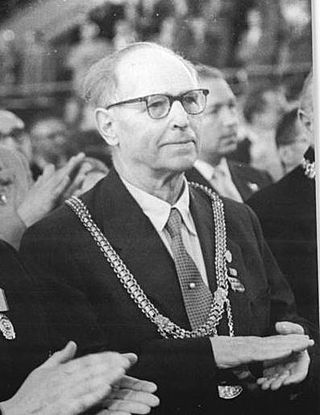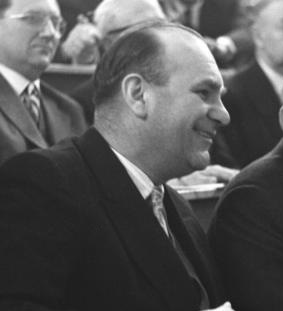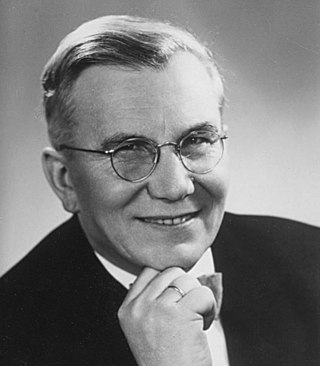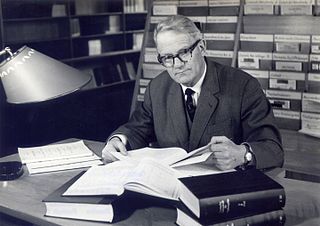Postscript
Riewe's widow moved to Sukhumi, where at that time there was workforce of 300 Germans working at Manfred von Ardenne's Laboratory A, in Sinop, [6] [7] a suburb of Sukhumi. She eventually married the German draftsman Willi Lange. In 1950, Lange, his wife, Lange's daughter Hannelora, and his wife's children by Riewe, moved to Sungul', where he worked at Nikolaus Riehl's Laboratory B, also known under another cover name, [8] Объект 0211 (Ob'ekt 0211, Object 0211). [9] [10] [11] [12] After 1953, they were quarantined in the Agudzery (Agudseri) transition camp, after which Germans returned to Germany. [13] [14] K.Riewe was in the gulag in the city of Dzhezkazgan, Kazakh SSR. After the death of I.V. Talin, his wife and daughter Christiane (bon 19/04/1942y.) From the city of Sukhumi returned to Germany. After some time, her husband returned, Karl Riewi He survived the Soviet labor camp and survived. The family settled in western Germany, in the city of Hanau, where they lived for the rest of their lives. Died Karl-H-Riewe in early 199? year. After a while, his wife died. Karl After returning, he worked in various positions: he helped as a scientific secretary organize and hold world congresses of physicists-nuclear engineers. For a long time he worked as the head of the patent office in Hanau.Daughter Christiane Riewe-Talwar is still alive. Lives in the Host/Odenwald area The death of Karla Riewe in Soviet captivity was erroneous. I have been friends with his daughter for a long time and she told me this.

Gustav Ludwig Hertz was a German experimental physicist and Nobel Prize winner for his work on inelastic electron collisions in gases, and a nephew of Heinrich Hertz.

Manfred baron von Ardenne was a German researcher and applied physicist and inventor. He took out approximately 600 patents in fields including electron microscopy, medical technology, nuclear technology, plasma physics, and radio and television technology. From 1928 to 1945, he directed his private research laboratory Forschungslaboratorium für Elektronenphysik. For ten years after World War II, he worked in the Soviet Union on their atomic bomb project and was awarded a Stalin Prize. Upon his return to the then East Germany, he started another private laboratory, Forschungsinstitut Manfred von Ardenne.

Nikolaj Vladimirovich Timofeev-Resovskij was a Soviet biologist. He conducted research in radiation genetics, experimental population genetics, and microevolution. His life was highlighted by scientific achievements in the face of severe personal hardship, including his imprisonment and working in secret scientific facilities of Soviet Gulag.
Karl Günter Zimmer, PhD, was a German nuclear chemist who is best known for his work in understanding the ionizing radiation on Deoxyribonucleic acid (DNA).
Nikolaus Riehl was a German nuclear physicist. He was head of the scientific headquarters of Auergesellschaft. When the Russians entered Berlin near the end of World War II, he was invited to the Soviet Union, where he stayed for 10 years. For his work on the Soviet atomic bomb project, he was awarded a Stalin Prize, Lenin Prize, and Order of the Red Banner of Labor. When he was repatriated to Germany in 1955, he chose to go to West Germany, where he joined Heinz Maier-Leibnitz on his nuclear reactor staff at Technische Hochschule München (THM); Riehl made contributions to the nuclear facility Forschungsreaktor München (FRM). In 1961 he became an ordinarius professor of technical physics at THM and concentrated his research activities on solid state physics, especially the physics of ice and the optical spectroscopy of solids.

Max Volmer was a German physical chemist, who made important contributions in electrochemistry, in particular on electrode kinetics. He co-developed the Butler–Volmer equation. Volmer held the chair and directorship of the Physical Chemistry and Electrochemistry Institute of the Technische Hochschule Berlin, in Berlin-Charlottenburg. After World War II, he went to the Soviet Union, where he headed a design bureau for the production of heavy water. Upon his return to East Germany ten years later, he became a professor at the Humboldt University of Berlin and was president of the East German Academy of Sciences.

Heinz Barwich was a German nuclear physicist. He was deputy director of the Siemens Research Laboratory II in Berlin. At the close of World War II, he followed the decision of Gustav Hertz, to go to the Soviet Union for ten years to work on the Soviet atomic bomb project, for which he received the Stalin Prize. He was director of the Zentralinstitut für Kernforschung at Rossendorf near Dresden. For a few years he was director of the Joint Institute for Nuclear Research in Dubna, Soviet Union. In 1964 he defected to the West.

The Soviet Alsos or Russian Alsos is the western codename for an operation that took place during 1945–1946 in Germany, Austria, and Czechoslovakia, in order to exploit German atomic related facilities, intellectual materials, material resources, and scientific personnel for the benefit of the Soviet atomic bomb project. The contributions of the German scientists is borne out by the many USSR State Prizes and other awards given in the wake of the second Soviet atomic bomb test, a uranium-based atomic bomb; awards for uranium production and isotope separation were prevalent. Also significant in both the first Soviet atomic bomb test – a plutonium-based atomic bomb which required a uranium reactor for plutonium generation – and the second test, was the Soviet acquisition of a significant amount of uranium immediately before and shortly after the close of World War II. This saved the Soviets at least a year by their own admission.
Rudolf Heinz Pose was a German nuclear physicist who worked in the former Soviet program of nuclear weapons.
Günter Wirths was a German chemist who was an authority on uranium production, especially reactor-grade. He worked at Auergesellschaft in the production of uranium for the Heereswaffenamt and its Uranverein project. In 1945, he was sent the Soviet Union to work on the Russian atomic bomb project. When he was released from the Soviet Union, he settled in West Germany, and worked at the Degussa company.
The industrial firm Auergesellschaft was founded in 1892 with headquarters in Berlin. Up to the end of World War II, Auergesellschaft had manufacturing and research activities in the areas of gas mantles, luminescence, rare earths, radioactivity, and uranium and thorium compounds. In 1934, the corporation was acquired by the German corporation Degussa. In 1939, their Oranienburg plant began the development of industrial-scale, high-purity uranium oxide production. Special Soviet search teams, at the close of World War II, sent Auergesellschaft equipment, material, and staff to the Soviet Union for use in their nuclear weapon project. In 1958 Auergesellschaft merged with the Mine Safety Appliances Corporation, a multinational US corporation. Auergesellschaft became a limited corporation in 1960.

Georg Robert Döpel was a German experimental nuclear physicist. He was a participant in a group known as the "first Uranverein", which was spawned by a meeting conducted by the Reichserziehungsministerium, in April 1939, to discuss the potential of a sustained nuclear reaction. He worked under Werner Heisenberg at the University of Leipzig, and he conducted experiments on spherical layers of uranium oxide surrounded by heavy water. He was a contributor to the German nuclear weapon project (Uranprojekt). In 1945, he was sent to Russia to work on the Soviet atomic bomb project. He returned to Germany in 1957, and he became professor of applied physics and director of the Institut für Angewandte Physik at the Hochschule für Elektrotechnik, now Technische Universität, in Ilmenau (Thuringia).
Alexander Siegfried Catsch was a German-Russian medical doctor and radiation biologist. Up to the end of World War II, he worked in Nikolaj Vladimirovich Timefeev-Resovskij's Abteilung für Experimentelle Genetik at the Kaiser-Wilhelm-Institut für Hirnforschung. He was taken prisoner by the Russians at the close of World War II. Initially, he worked in Nikolaus Riehl's group at Plant No. 12 in Ehlektrostal’, but at the end of 1947 was sent to work in Sungul' at a sharashka known under the cover name Ob’ekt 0211. At the Sungul' facility, he again worked in biological research department under the direction of Timofeev-Resovskij. When Catsch returned to Germany in the mid-1950s, he fled to the West. He worked at the Biophysikalische Abteilung des Heiligenberg-Instituts and then at the Institut für Strahlenbiologie am Kernforschungszentrum Karlsruhe. While in Karlsruhe, he was also appointed, in 1962, to the newly created Lehrstuhl für Strahlenbiologie, at the Technische Hochschule Karlsruhe. In West Germany, he developed methods to extract radionucleotides from various organs.
Hans-Joachim Born was a German radiochemist trained and educated at the Kaiser-Wilhelm-Institut für Chemie. Up to the end of World War II, he worked in Nikolaj Vladimirovich Timofeev-Resovskij's Abteilung für Experimentelle Genetik, at the Kaiser-Wilhelm-Institut für Hirnforschung. He was taken prisoner by the Russians at the close of World War II. After rescue from the Krasnoyarsk PoW camp, he initially worked in Nikolaus Riehl's group at Plant No. 12 in Elektrostal’, Russia, but at the end of 1947 was sent to work in Sungul' at a sharashka known under the cover name Ob’ekt 0211. At the Sungul' facility, he again worked in a biological research department under the direction of Timofeev-Resovskij. Upon arrival in East Germany in the mid-1950s, Born became the director of the Institut für Angewandte Isotopenforschung in Buch, Berlin. He also completed his Habilitation at the Technische Hochschule Dresden, where he then also became a professor on the Fakultät für Kerntechnik. In 1957, he received and accepted a call to become a professor of radiochemistry at the Technische Hochschule München in West Germany.
Justus Mühlenpfordt was a German nuclear physicist. He received his doctorate from the Technische Hochschule Carolo-Wilhelmina zu Braunschweig, in 1936. He then worked in Gustav Hertz's laboratory at Siemens. In 1945, he was sent to Institute G, near Sukhumi and under the directorship of Hertz, to work on the Soviet atomic bomb project. Released from Soviet Union, Mühlenpfordt arrived in East Germany in 1955. He was appointed director of the Institut für physikalische Stofftrennung of the Academy of Sciences, in Leipzig. From 1969 until his retirement in 1974, Mühlenpfordt was director of the Forschungsbereiches Kern- und Isotopentechnik der Akademie.

Werner Hartmann was a German physicist who introduced microelectronics into East Germany. He studied physics at the Technische Hochschule Berlin and worked at Siemens before joining Fernseh GmbH. At the end of World War II, he and his research staff were flown to the Soviet Union to work on their atomic bomb project; he was assigned to Institute G. In 1955, he arrived in the German Democratic Republic (GDR); in the same year, he founded and became the director of the VEB Vakutronik Dresden, later VEB RFT Meßelektronik Dresden. In 1956, he completed his Habilitation at the Technische Hochschule Dresden and also became a professor for Kernphysikalische Elektronik there. In 1961, he founded the Arbeitsstelle für Molekularelektronik Dresden (AME). He was awarded the National Prize of GDR in 1958. In 1974, he was removed from his positions, significantly demoted, and sent to work as a staff scientist at the VEB Spurenmetalle Freiberg. Hartmann had been the object of security investigations by the Stasi for some time; while he was investigated at length and repeatedly interrogated, the alleged charges were politically motivated and no trial ever took place. The Werner-Hartmann-Preis für Chipdesign is an industrial award given in Hartmann's honor for achievement in the field of semiconductors.

Laboratory B, also known as Object B or Object 2011 during its period of operation, was a Soviet nuclear research site constructed in 1946 at Lake Sungulʹ in Chelyabinsk Oblast. It operated under the 9th Chief Directorate of the MVD and contributed to the Soviet nuclear weapons program and was responsible for the handling, treatment, and use of radioactive products generated in reactors, as well as radiation biology, dosimetry, and radiochemistry. It had two divisions: radiochemistry and radiobiophysics; the latter was headed by N. V. Timofeev-Resovskij.

Walter Herrmann was a German nuclear physicist and mechanical engineer who worked on the German nuclear energy project during World War II. After the war, he headed a laboratory for special issues of nuclear disintegration at Laboratory V in the Soviet Union.
Ernst Rexer was a German nuclear physicist. He worked on the German nuclear energy program during World War II. After the war, he was sent to Laboratory V, in Obninsk, to work on the Soviet atomic bomb project. In 1956, he was sent to East Germany, where he was a professor and director of the Institute for the Application of Radioactive Isotopes at the Technische Hochschule Dresden.

Josef 'Sepp' Schintlmeister was an Austrian-German nuclear physicist and alpinist from Radstadt. During World War II, he worked on the German nuclear energy project, also known as the Uranium Club. After World War II, he was sent Russia to work on the Soviet atomic bomb project. After he returned to Vienna, he took positions in East Germany. He was a professor of physics at the Technische Hochschule Dresden as well holding a leading scientific position at the Rossendorf Central Institute for Nuclear Research.










